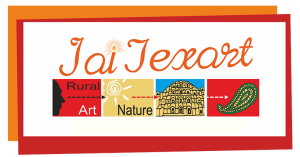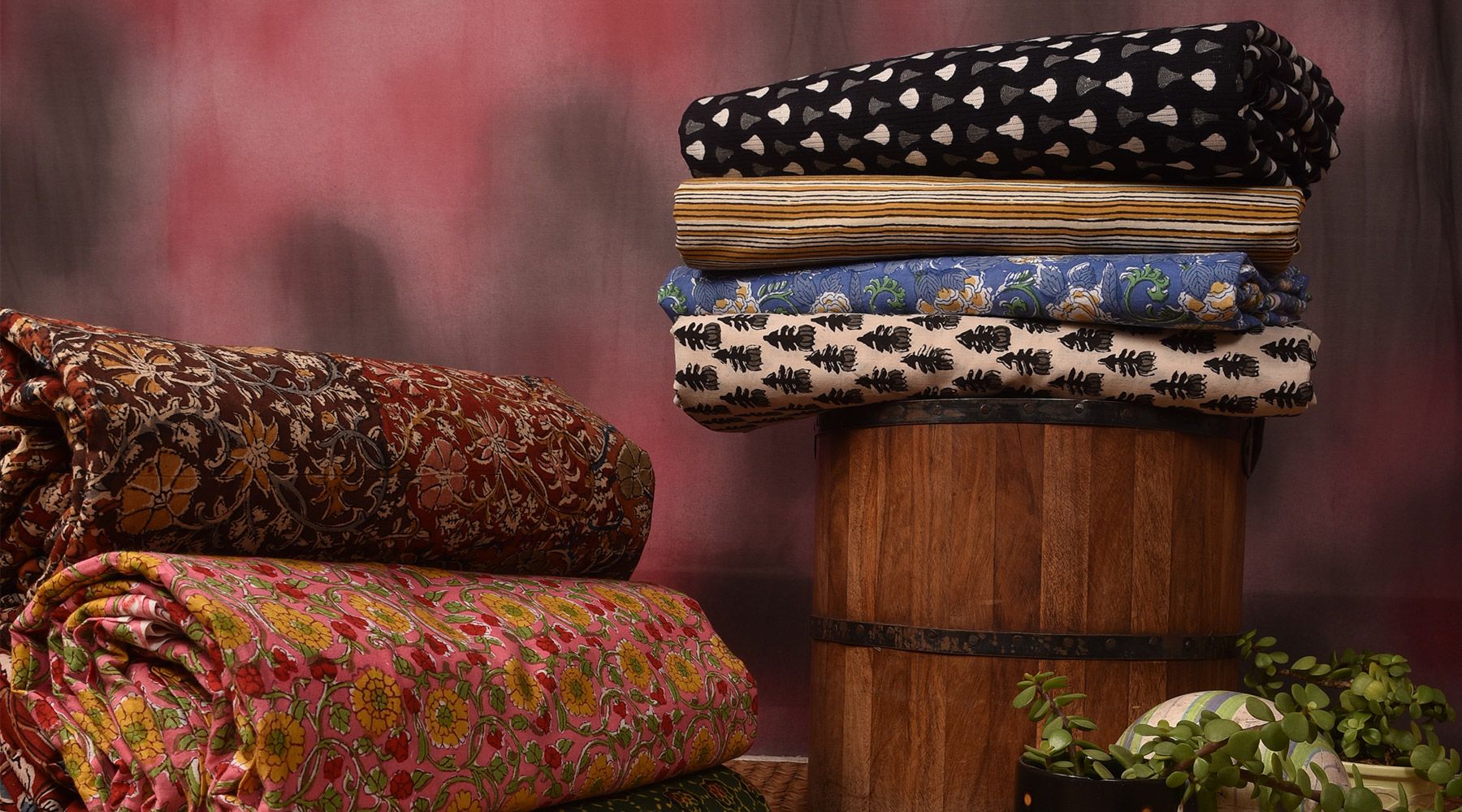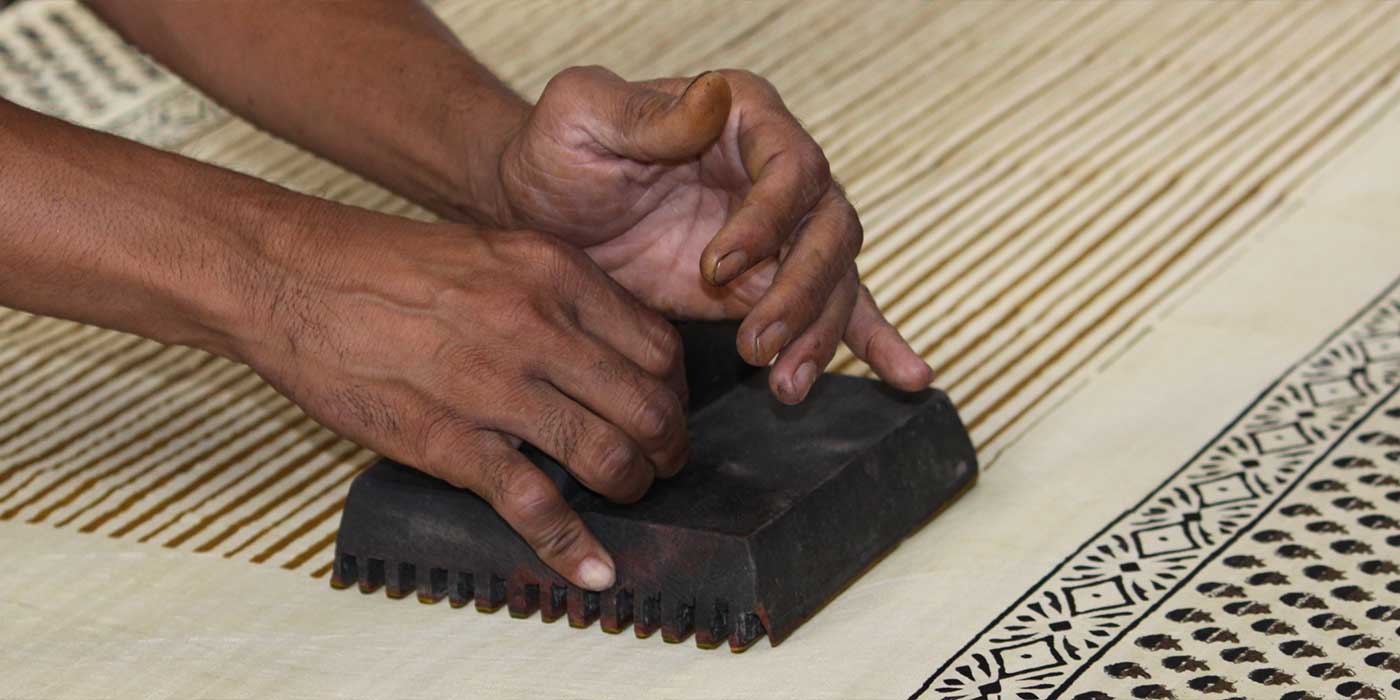Hand Block printing is one of the ancient art of India . During buddha’s time -2500 year ago the hand block printed cotton cloth with vegetable dyes were exported to babylon and other parts of india .It utilised hand carved wood blocks and vegetable dyes – now chemical also to print on natural fiber base fabric – cotton ,silk, wool etc .
Hand block printing process consists of several co-ordinated steps. Detail of each step are as follows :
WOODEN BLOCK MAKING
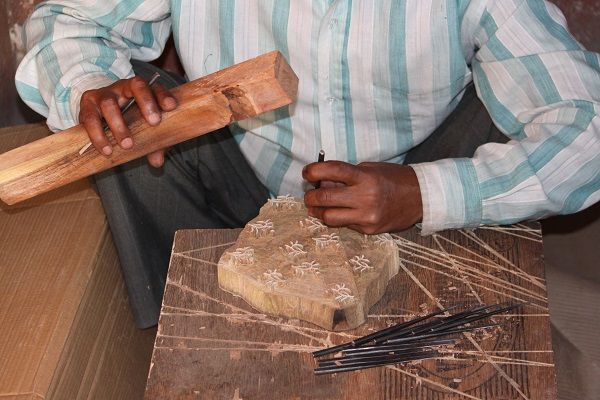
The design is first drawn on paper and stretched out on a smooth wooden surface. The motif or design is then pierced with needle so that the impression is transferred on the wooden surface.
Later the unwanted areas are carved out. Iron nails and wooden felt are also used to improve the quality of impression.
Wooden blocks can be classified in three types:
Rekh – the out line block,
Gudh – the background block
Dutta – the filling block
Sheesham , a kind of Indian teak is used for making blocks. Since it is tough wood the outline block which wears out most are made out of it , Roahda and Gurjan which are softer and lighter wood are used for making the rest of the blocks including mud resist blocks ( for Daboo prints ) which generally need deep carving and light weight .
The craft of block making is now concentrated in few parts of India. I.e. Rajasthan Jaipur and its surrounding area, U.P. i.e. Varanasi, and some other parts of U.P. Delhi, Karnataka (near Bangalore) and Andhra.
PRINTING TABLES
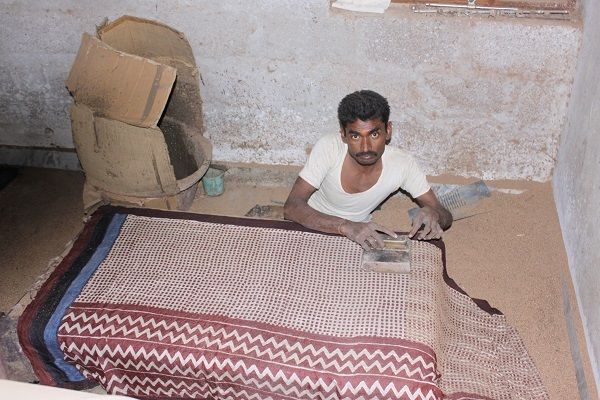
Traditionally printing tables were of 2 feet wide and 3 ft in length and 1 ft high above the ground. These are known as patias.
Now a day’s bigger tables 5 feet wide and 6 meters long and 4 feet high are used for faster production. Women and old printers prefer the traditional patia for printing.
The printing tables are covered with 22 to 26 layers of hessian cloths and finally covered with three to four layers of old fabric known as acharas. These acharas are changed every time. A fresh cloth is laid for printing.
PROCESS OF BLOCK PRINTING
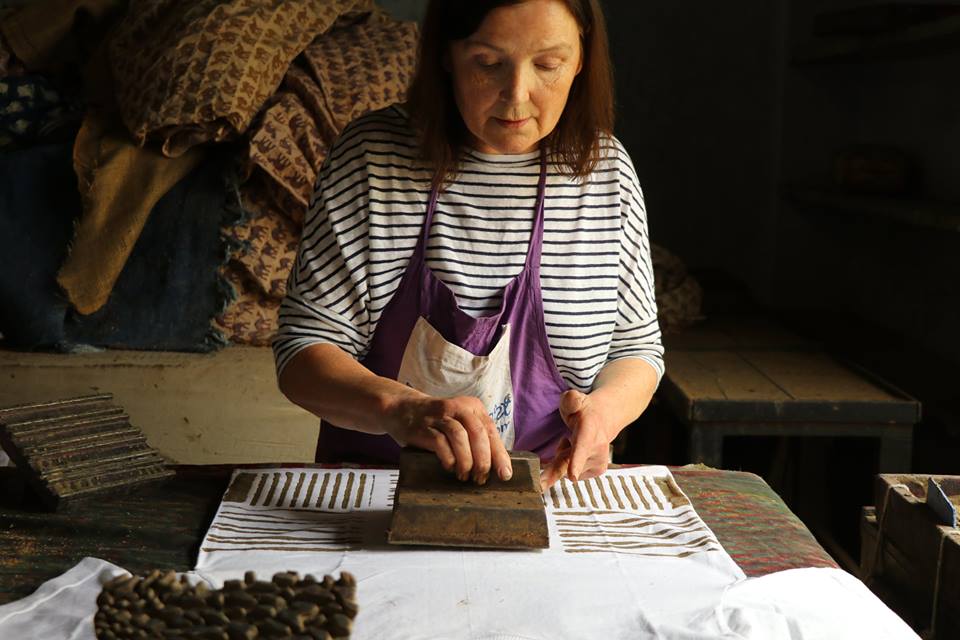
First, the fabric to be printed is washed, free of starch and soft bleached. If dyeing is required, it is done before printing. In some of the printing techniques dyeing is done after printing as well. The fabric is again washed to remove excess dye and dried thoroughly. The fabric is stretched over the printing table and fastened with small pins. This is an important stage as there should be a uniform tension in the fabric with no ripples.
The colour to be used is kept in a tray on a wheeled wooden trolley with racks which the printer drags along as he works. On the lower shelves printing blocks are kept ready. Under the colour tray is kept another tray containing a thick viscous liquid made from colour binder and glue. This gives the colour tray a soft base which helps to spread colour evenly on the wooden block.
The printing starts from left to right. The colour is evened out in the tray with a wedge of wood and the block dipped into the outline colour (usually black or a dark colour).\ When the block is applied to the fabric, it is slammed hard with the fist on the back of the handle so that a good impression may register.
This job is usually done by an expert printer who ensures the effect is continuous and not disjoined. If it is a multiple colour design, the second printer dips his block in colour again and prints on top of the outline made by the first block. The third colour if required follows likewise, precisely aligning the block each time. Skill is necessary for good printing since the colours need to dovetail into the design to make it a composite whole.
The fabric is sun-dried, which is part of the colour-fixing process. It is rolled in wads of newspapers to prevent the dye from adhering to other layers and steamed in boiler constructed for the purpose. After steaming, the material is washed thoroughly in large quantity of water and dried in the sun, after which it is finished by ironing out single layers, which fix the colour permanently. Printing process for vegetable dyes and chemical dyes are different. However the above process is the basic process which is by and large applicable in both the dyes.
